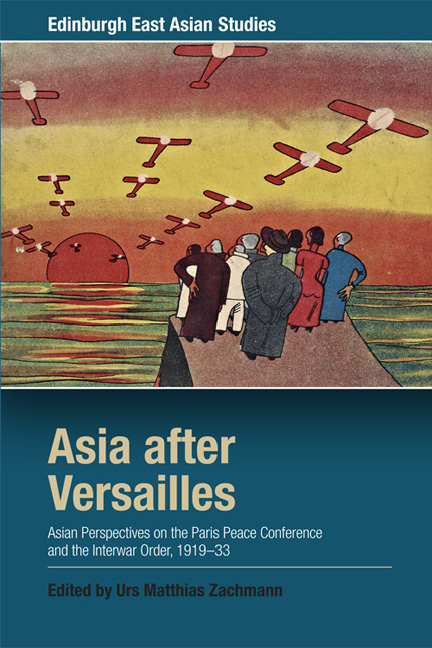 Asia after Versailles
Asia after Versailles from Part II
Published online by Cambridge University Press: 22 December 2017
Nationalism and the New Culture and May Fourth Movements
Following its inauguration as the first Asian republic in 1912, China was profoundly affected by the outbreak of the First World War in the early days of its national formation. The impact was further amplified by the Russian Revolution, which followed a few years later. Japan had made Korea its protectorate in 1905 as a foothold for the invasion of Manchuria, before annexing the country in 1910. Furthermore, when the First World War broke out, Japan moved quickly to appropriate German interests in the Shandong Peninsula by taking advantage of the diminishing presence of the Western powers, who were now preoccupied with the war in Europe. After the murder of a German missionary in the Shandong Peninsula in 1897, German troops had occupied Jiaozhou (Kiaochow) Bay in Tsingtao (Qingdao), and then the city as a whole on the pretext of protecting German missionaries. Since 1898, Tsingtao had been a leased territory of Germany. Now, however, Japan declared war against Germany in August 1914 when the war broke out, ostensibly citing the Anglo- Japanese Alliance. In addition, in September of the same year, Japanese troops landed in Shandong, claiming that the province was under German rule, despite China having already declared its neutrality in the war. In the following month, Japanese troops occupied Jinan, and in November, Tsingtao. These actions prompted local Chinese to start organising a movement for regaining their territory. In January 1915, Japan served the Twenty-One Demands to China, which were accepted by the then government of Yuan Shikai on 9 May. The day soon became known as National Humiliation Day in China. In August 1917, shortly before Germany's surrender, China entered the war. There were growing expectations among the Chinese that the return to China of the rights to the Shandong Peninsula would be decided at the Paris Peace Conference, given that US President Woodrow Wilson had announced his Fourteen Point peace programme upholding the principles of self-determination and of fair solutions to colonial problems.
To save this book to your Kindle, first ensure [email protected] is added to your Approved Personal Document E-mail List under your Personal Document Settings on the Manage Your Content and Devices page of your Amazon account. Then enter the ‘name’ part of your Kindle email address below. Find out more about saving to your Kindle.
Note you can select to save to either the @free.kindle.com or @kindle.com variations. ‘@free.kindle.com’ emails are free but can only be saved to your device when it is connected to wi-fi. ‘@kindle.com’ emails can be delivered even when you are not connected to wi-fi, but note that service fees apply.
Find out more about the Kindle Personal Document Service.
To save content items to your account, please confirm that you agree to abide by our usage policies. If this is the first time you use this feature, you will be asked to authorise Cambridge Core to connect with your account. Find out more about saving content to Dropbox.
To save content items to your account, please confirm that you agree to abide by our usage policies. If this is the first time you use this feature, you will be asked to authorise Cambridge Core to connect with your account. Find out more about saving content to Google Drive.